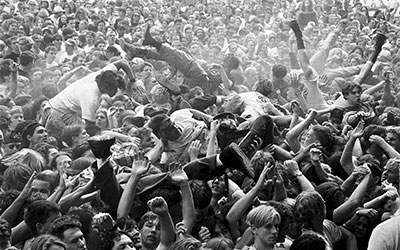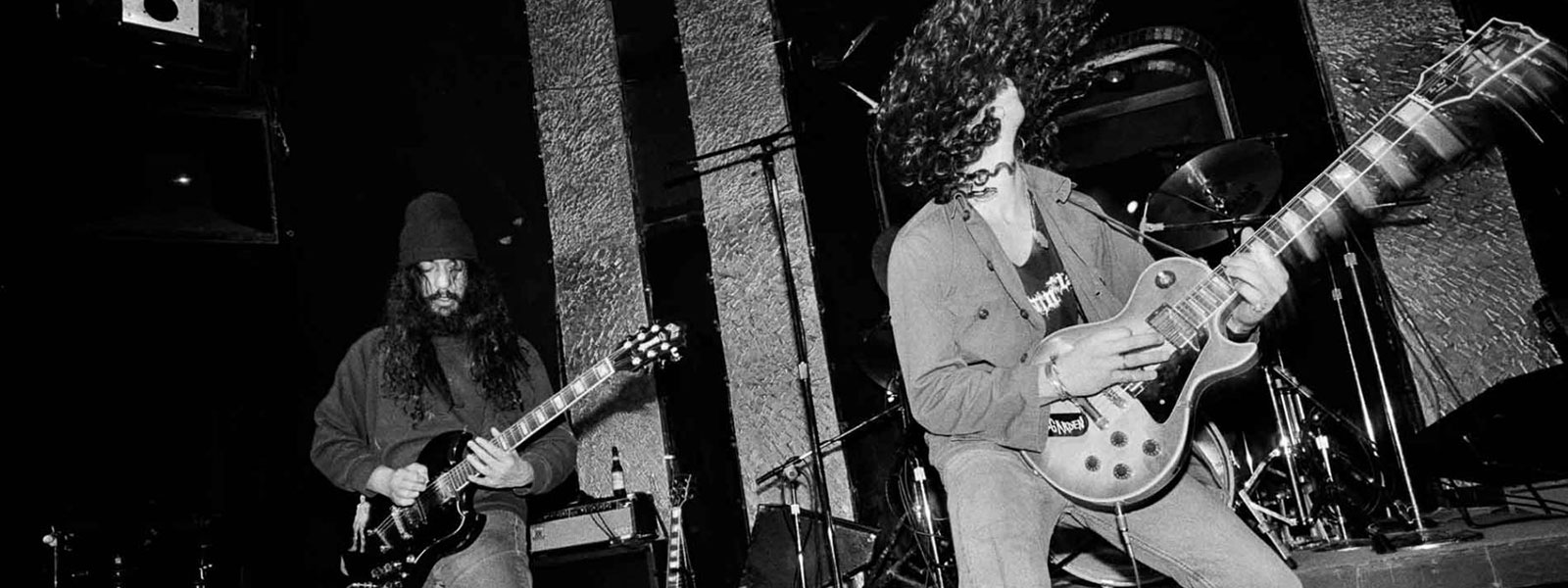Five Against One: the Story of Pearl Jam's vs.
In 1993, Pearl Jam released their much-anticipated follow-up to their hit debut album, Ten. In this excerpt from Clint Brownlee's vs. (part of the 33⅓ series), we see how their second album was a massive success - almost despite the band's efforts
This is an excerpt from the Clint Brownlee book, Vs., part of the 33⅓ series. Republished with permission.
Such is the danger of fame: everyone forms an opinion about you and thinks they know you. Though you’re proverbially “above it all,” the reality is that you’re under a microscope. Every minute, every day. And it’s not a relatable experience. No one can know what the roller-coaster ride is like except those buckled into the car—and perhaps the friends and family close enough to feel the whoosh created by its runaway passing.

Vs., part of the 33⅓ series.
Chris Cornell, a Seattle native who befriended Eddie Vedder shortly after the latter’s arrival in the city, was locked in a parallel ride (with Soundgarden) at the time and had a bird’s-eye view of his new friend’s strenuous journey.
“[Vedder] wanted Pearl Jam to be a band that goes out and tours in a van and pays its dues and plays clubs and makes albums, and has a slow, natural life,” he said. “Somewhere in there, he wants the whole world to know who they are, but he was very, very specific about not wanting it to be right this second.”
Jeff Ament echoed the sentiment: “We all came from nothing, or not very much. And all of a sudden, the world is your oyster. You go from not being able to get a show in town at the two-hundred-capacity club, and now you have every band in the universe saying, ‘Do you want to go on tour with us?’ It was great, but it was weird. The overriding feeling was of guilt, like, do we deserve this yet? There may be a time when we deserve it, but we didn’t think it was that quickly.”

Pearl Jam, vs.
Released 10/23/93 on Epic Records
Recorded March–May 1993
at The Site, Nicasio, California, and Potatohead, Seattle, by Brendan O'Brien
Most of the band members wanted to earn the keys to the kingdom, not have them eagerly tossed over after one album. So, led by Vedder, they retreated and made a second record that plainly delivered that message (and multiple others)— with its cover, its lyrics, its searing guitars and hard-charging rhythm section.
Vs. was a vicious, commentary-laden record quietly punctuated with reflections on disappointment and regret. It was a middle finger to the roller coaster’s operator, to “the man” behind the societal machine of fame. It was a calculated response to what had launched the band into the stratosphere, constructed specifically to sidestep rising even further into rarified air. Pearl Jam actually put effort into limiting the accessibility of the album.
In that regard, Vs. was a massive failure.
Like Ten, Pearl Jam’s second record was a hit. Unlike the debut record, the sophomore effort, released (on CD, a week after its vinyl incarnation) on October 19, 1993, was instantly embraced. And the rocket ship propelling the band rose higher than any had before.
More copies of Vs. sold in its first week than all nine other albums in the Billboard 200’s Top 10 combined: 950,378. It was a record.
Three years into its existence, Pearl Jam was already too big to fail. On the charts, at least.
Read the whole story in Clint Brownlee's book, vs. Available in bookstores and online on March 11, 2021.
Clint Brownlee is a copywriter, sometime music journalist, and would-be novelist. He has lived in the Seattle area for over two decades and written for Seattle Weekly, Sound Magazine, Northwest Music Scene, Vashon-Maury Island Beachcomber, and other outlets. His '90s hair is history, but he still wears flannel every day.
Previous Feature
The Grunge Years: Sub Pop and the Quest toward World Domination


